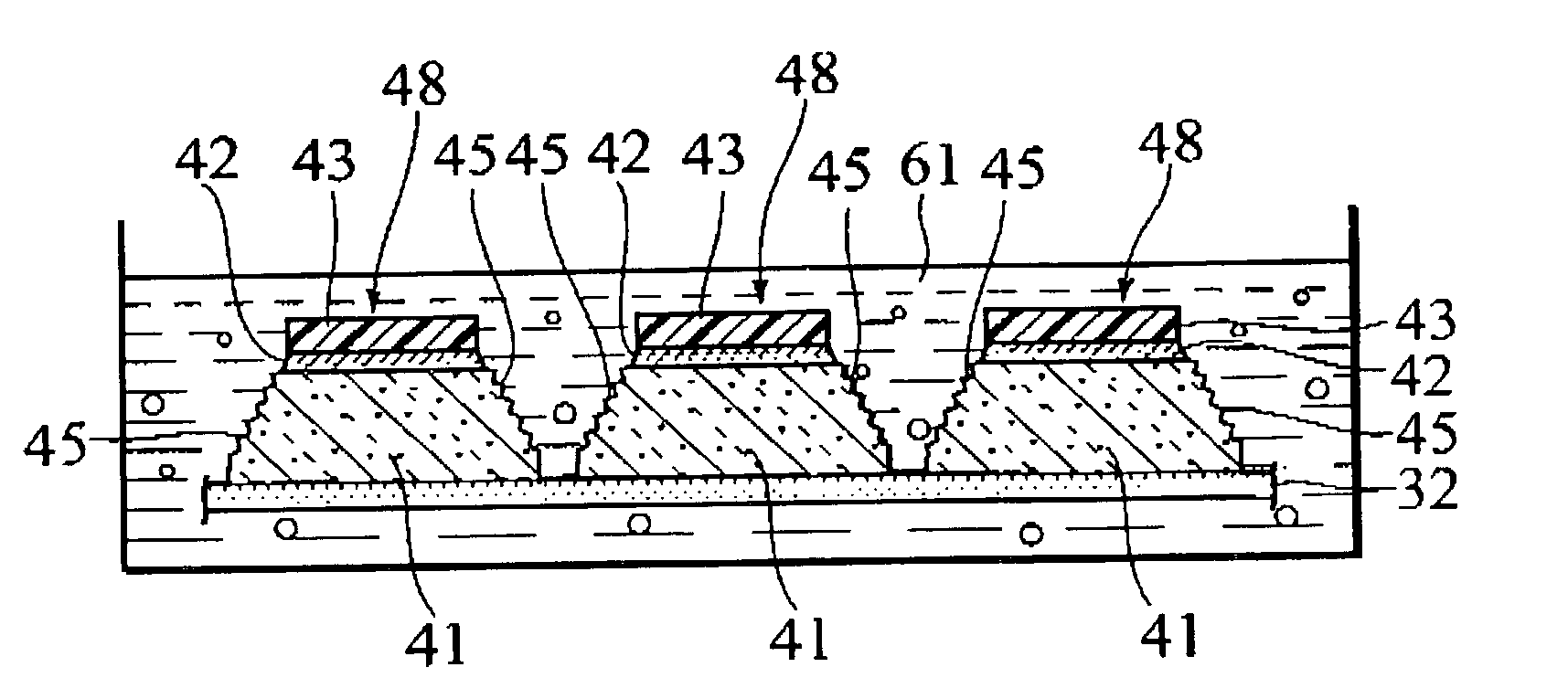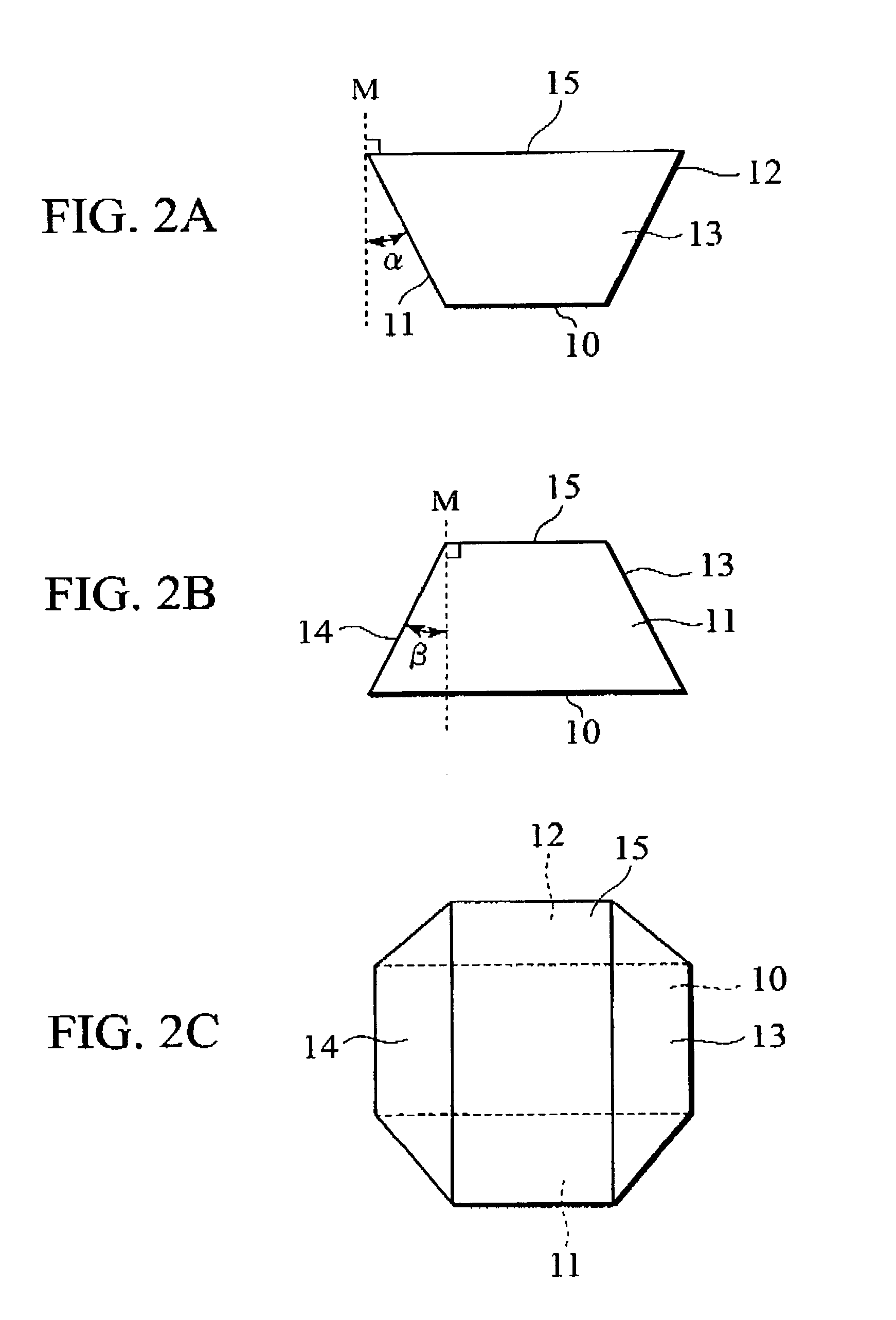Light emitting element and manufacturing method for the same
a technology of light emitting elements and manufacturing methods, which is applied in the direction of basic electric elements, electrical equipment, semiconductor devices, etc., can solve the problems of difficult to form such a layer having the continuously changing refractive index on the surface of led, poor extraction efficiency of led chips encapsulated with epoxy resin, and difficult to say that an inherent property
- Summary
- Abstract
- Description
- Claims
- Application Information
AI Technical Summary
Benefits of technology
Problems solved by technology
Method used
Image
Examples
first embodiment
[0067] The method for manufacturing a modified pyramid LED according to the modified example of the first embodiment is described with referencing FIGS. 10A through 10J.
[0068] (a) To begin with, as shown in FIG. 10A, a blade 20 with a V-shaped edge of a point angle of 60 degrees is used on a top surface of an LED wafer 40 affixed upon an acid resistant sheet 32 to perform cutting in one direction and form first cuts 51 (see FIG. 4B).
[0069] (b) Next as shown in FIG. 10B, by immersing in a HCl--H.sub.2O.sub.2 mixed solution 60, damaged layers on the side surface of the first cuts 51, caused by the cutting, is removed and the side surfaces are smoothed. After rinsing with water, as shown in FIG. 10C, the LED wafer 40 is immersed in an HCl solution 61 so that the side surfaces of the first cuts 51 are etched by the HCl solution 61 at 60.degree. C. for 10 minutes. A rough surface 45 is formed on the side surfaces of the first cuts 51.
[0070] (c) Thereafter, rinsing and drying is performed...
second embodiment
[0075] Second Embodiment
[0076] An LED chip 148 according to a second embodiment of the present invention, as shown in FIG. 11, has InGaAlP epitaxial layers including a light emitting layer disposed on a GaP substrate as a base substrate. The base substrate includes the GaP substrate 108 having a p-type conductivity and a p-type GaP layer 107 disposed on the GaP substrate 108. The InGaAlP epitaxial layers includes an n-type current diffusion layer 102, an n-type clad layer 103, an active layer 104, a p-type clad layer 105, and a bonding layer 106. A light emitting layer is the active layer 104 sandwiched between the n-type clad layer 103 and the p-type clad layer 105. The bonding layer 106 of the epitaxial layer is disposed directly on the p-type GaP layer 107 of the base substrate. First and second electrodes 109 and 110 of the LED chip 148 are provided on a bottom surface of the GaP substrate 108 and a top surface of the n-type current diffusion layer 102. The base substrate has ro...
PUM
 Login to View More
Login to View More Abstract
Description
Claims
Application Information
 Login to View More
Login to View More - R&D
- Intellectual Property
- Life Sciences
- Materials
- Tech Scout
- Unparalleled Data Quality
- Higher Quality Content
- 60% Fewer Hallucinations
Browse by: Latest US Patents, China's latest patents, Technical Efficacy Thesaurus, Application Domain, Technology Topic, Popular Technical Reports.
© 2025 PatSnap. All rights reserved.Legal|Privacy policy|Modern Slavery Act Transparency Statement|Sitemap|About US| Contact US: help@patsnap.com



